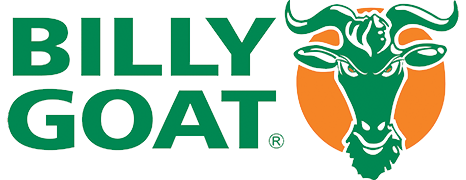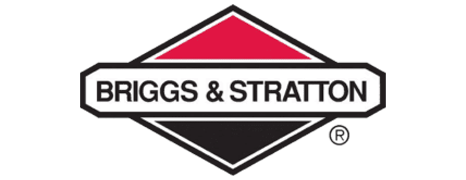Discover Superior Outdoor Power Equipment with Ellenbrook Mowers
Elevate your outdoor maintenance game with Ellenbrook Mowers, your trusted ally for premium power equipment solutions. Explore our comprehensive range of high-quality lawnmowers, chainsaws, trimmers, and more, tailored to meet your every need. Whether you’re seeking sales guidance, professional servicing, or reliable repairs, we’re here to optimise your lawn care experience from start to finish.
Discover A Quality Range of Products and Accessories at Ellenbrook Mowers
Explore our extensive collection of products and accessories at Ellenbrook Mowers. From high-powered lawn mowers to precise trimmers, robust chainsaws, and efficient blowers, we cater to all your outdoor needs. Whether you’re a passionate gardener or a professional landscaper, we have the perfect tools to enhance your outdoor maintenance routine. Dive into our diverse range and revolutionise your outdoor experience with our premium-grade equipment.
Brands We Stock








Latest News
Address
Ellenbrook WA 6069
Hours
- Mon – Fri 8am to 5pm
- Sat 8am to 5pm
- Sun Closed
Contact
Frequently Asked Questions
You have questions, we have answers! Read on to discover the solutions to the most asked questions about our outdoor power equipment and lawn mowers.
How Do I Choose a Lawn Mower Type?
Before unpacking the most common types of lawn mowers on the Australian market, buyers should consider their property’s size, the presence of tight corners, and how level their backyard ground is to ensure they are purchasing the perfect lawn mower. Once these factors have been considered, nailing down the ideal type of lawn mower is easy.
Push lawn mowers provide the user with control and accuracy to easily handle small to medium-sized lawns that require regular upkeep or perhaps just a touch-up now and then. Although push lawn mowers are great for tight corners and difficult edges, they tend to get caught on uneven terrain.
Plus, keep in mind users must supply the pushing-power with a traditional push mower, so if you have a yard with a few inclines, this might be an issue. A push lawn mower is your best option if your grass is less than 1,000 square metres in size and is flattish. But if you have a more extensive lawn you should consider a riding mower.
Riding lawn mowers can cut two to three times faster than simple push mowers, making them best suited for more extensive lawns. Today’s riding lawn mowers are extremely simple to use (compared to previous models), robust and come with comfortable seating, but their convenience comes at a cost.
There are a few types of riding lawn mowers to consider. The tractor-style is the standard type of riding mower controlled by a steering wheel and pads in automatic or manual transmission. Tractor-style riding mowers are available in smaller models that are more agile and easy to navigate through tight spaces, but also available in larger models that are more powerful with bigger cutting widths for larger jobs. The other type of riding mower is a zero-turn model controlled with left-right steer-drive handles that offer greater manoeuvrability, ideal for tricker jobs.
Robot lawn mowers are ideal for Australians who are short on time and still want to keep their backyards tidy. At this point, robot lawn mowers aren’t quite as versatile as their push and ride-on counterparts. They are not ideal for larger and more complicated yards as it is more difficult for robot lawn mowers to handle uneven terrain.
Finally, the traditional reel mowers spin five to twelve exposed blades to slice the grass against a fixed bottom plate, operating like a pair of scissors. The unique cutting movement of reel mowers is excellent for low or short cuts, but it will not cut tall grass. Reel mowers cut a clean, precise trim that results in a healthier and more appealing lawn. Battery and petrol-powered reel mowers are available, but they are more commonly known as cylinder mowers.
What is the Difference Between an Electric Lawn Mower and Petrol Lawn Mower?
While both electric lawn mowers and petrol lawn mowers deliver outstanding results, there are clear distinctions between the two, which may make one model more suitable for specific applications.
While petrol lawn mowers are not as ecologically friendly as electric lawn mowers, they have a longer run time, a wider mowing range, higher dependability, and more power. As a result, petrol lawn mowers are better suited to larger turf projects with challenging terrain.
Electric lawn mowers are ideal for smaller lawns and are available in two varieties, battery-powered and corded. While both are environmentally friendly choices, they also come with drawbacks. Battery electric mowers are constantly at risk of running out of energy before you finish the task, and corded electric mowers have a restricted range.
Cutting diameter, which is the size of the blade slicing the grass, is another factor to consider. Petrol lawn mowers generally have a 45-50 cm cutting diameter, whilst electric lawn mowers typically have a 30-40 cm cutting diameter. While this may not seem like much, 10-20 cm will save users a couple of mowing laps around the lawn.
When is the Best Time to Buy a Lawn Mower?
Buying a lawn mower at the correct time will save you money. According to consumer reports, the best months to buy a lawn mower are April, May, August, September, and October. One widespread belief is that the ideal time to buy a lawn mower is right after the busy summer mowing season ends, typically when autumn weather approaches as fewer people are mowing their lawns then.
What is the Difference Between a Hedge Trimmer and a Hedge Cutter?
While both tools appear to be similar and perform comparable duties, hedge trimmers and cutters are, in fact, so distinct that using the wrong one for the wrong job might result in a variety of issues, ranging from tool damage to hedge damage.
Hedge trimmers are best suited for light branches, bush trimming work and intricate cuts. Hedge cutters are more suitable for heavy-duty work since they are more durable with larger blades and can handle thicker workloads. Hedge cutters should not be used for finishing touches; instead, they are better suited to cutting through thicker hedges and breaking down larger branches.
Ultimately, when the goal is to chop, use a hedge cutter and when the goal is to shape, use a hedge trimmer.
What is the Difference Between String Trimmers and Garden Edgers / Lawn Edgers?
String trimmers and lawn edgers don’t mow the lawn, but they help maintain a tidy yard appearance. String trimmers are used to keep the grass trimmed in places where a lawn mower can’t reach, such as around fences, under decks, and near fragile plants and shrubs. On the other hand, lawn edgers and garden edgers are used to tidy up the edges of walkways and driveways.
A lawn edger, also known as an edge trimmer, is a tool for trimming and defining yard boundary lines. It’s often utilised along the borders of your lawn to form a barrier between it and the nearby sidewalk, driveway, flowerbeds etc. Without edging, grass will grow over the edges, giving your lawn an untidy, overgrown appearance. Lawn edgers use a vertical spinning blade to cut neatly for crisp and clean borders. While manual edgers are less expensive than powered edgers, manual edgers need more work from the user, so a motorised edger may be a worthwhile investment if you have a lot of land to cover.
A string trimmer, sometimes known as a weed whacker, is a tool for cutting grasses in tight areas and removing weeds in hard-to-reach areas due to their mobile and flexible mon-filament line. String trimmers can be gas or electricity-powered; if you have a large lawn with a lot of land to cover, cordless electric trimmers are a better investment.
Are Battery Chainsaws Better than Gas-Powered Chainsaws?
Knowing the advantages and disadvantages of battery chainsaws and gas chainsaws will help you decide which tool is best for you.
Battery chainsaws are lightweight and small, making them easy to transport. They operate with a single push of a button and are quieter than gas chainsaws. Battery chainsaws are ideal for sprucing up trees, trimming branches, cutting small logs, and doing other cutting jobs around the house or yard. Plus, unlike corded electric chainsaws, battery chainsaws don’t have the disadvantage of a cord restricting the distance the device can travel.
Despite the positives, battery chainsaws lack the strength and endurance required to chop down huge trees. A gas chainsaw is your best choice if you have large trees on your property, live on a farm or ranch, or need something for professional usage. You won’t run out of battery life as you would with a battery chainsaw, so you can operate for longer if you have the proper gas supply.
Although, gas chainsaws are often heavy, resulting in users getting tired quickly. They are also noisier than electric chainsaws and require mixing oil and gas, emitting a gas odour while in use. Also, gas chainsaws are generally more expensive than battery chainsaws, making them less tempting for beginners.
Is it Worth Getting a Leaf Blower?
Even with the notable benefits of outdoor power equipment, buyers still commonly ask if leaf blowers are actually better than the manual option of rakes. It’s a fair question considering both tools perform well, but the ideal tool for you is dependent on the size of the space you have to clean.
Setting up a leaf blower may be comparable to the time it takes to rake a small area, so for small areas, rakes might be more beneficial. Plus, rakes are inexpensive, light, easy to use, unlikely to break down, and do not require any fuel. However, rakes can be physically demanding and unsuitable for clearing large properties, varying terrain types, and gutters on roofs.
On the other hand, leaf blowers can easily clean up your backyard twice as fast as a rake or broom, regardless of topography. Some leaf blower models are also capable of vacuuming and mulching leaves! Although leaf blowers do have drawbacks, as they are rather pricey, rather noisy, and some models need a certain level of expertise to operate.
Are Turf Cutters the Best Grass Removal Machine?
While many people choose to remove grass by hand, this process involves a lot of painful, hard work, and the end result is often an uneven and messy surface. Alternatively, turf cutters are the ideal instrument for removing grass.
In Australia, a turf cutter is also known as a sod cutter, lawn cutter or turf remover. Turf cutters are self-propelled turf removal machines that cut through layers of grass with a sharp blade and performs all heavy liftings for you, leaving a perfectly flat dirt surface.
After you’ve cut the grass to the correct depth using the turf cutter, you’ll be left with long carpet-like strips of grass, which are easy to carry and dispose of or re-lay elsewhere.
What are the Benefits of a Wood Chipper?
A wood chipper is a machine that breaks down big pieces of wood into smaller pieces. Wood chippers are fantastic for removing undesirable trees and other yard waste from your property, making the overall clean-up of yard work much more manageable. Plus, this method of disposal is more ecologically friendly than other options like burning.
Besides the obvious benefits, wood chippers also generate useful materials which can benefit your garden! A wood chipper can create mulch and compost which can aid in the growth of healthier plants without the additional costs of fertilisers. Wood chippers can also produce pressed wood which can be used to make various objects, including veneers, pallets, and even certain wooden furniture.
One of the most intriguing things you can do with wood chips is turning them into biofuel, which can be used to power vehicles and other machinery. Although, the transformation of wood chips into ethanol with the aid of specific enzymes takes a long time and requires certain expertise.
Any one of these advantages might be a compelling argument to purchase a wood chipper instead of using other conventional techniques to clear wood from your property.

